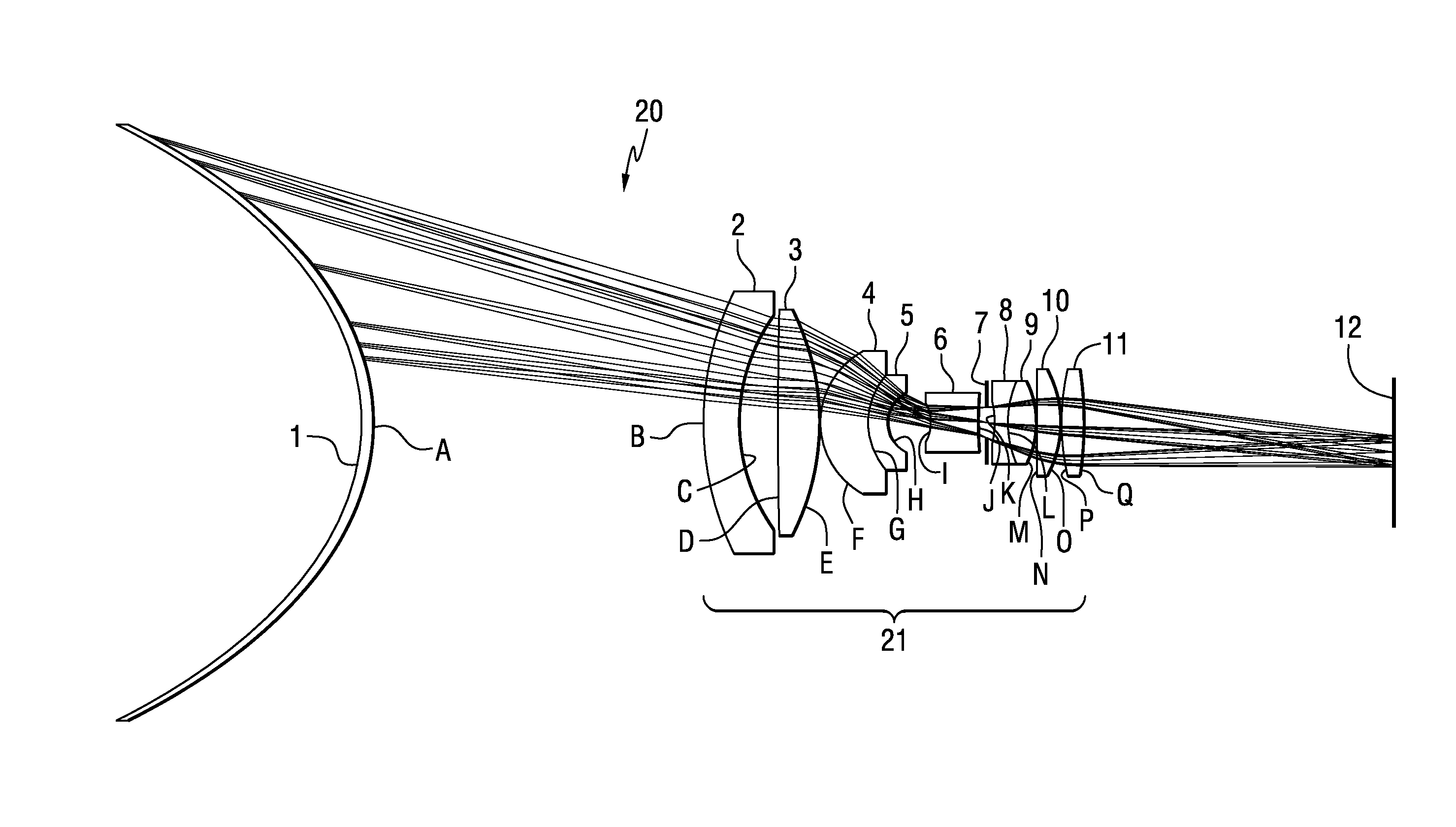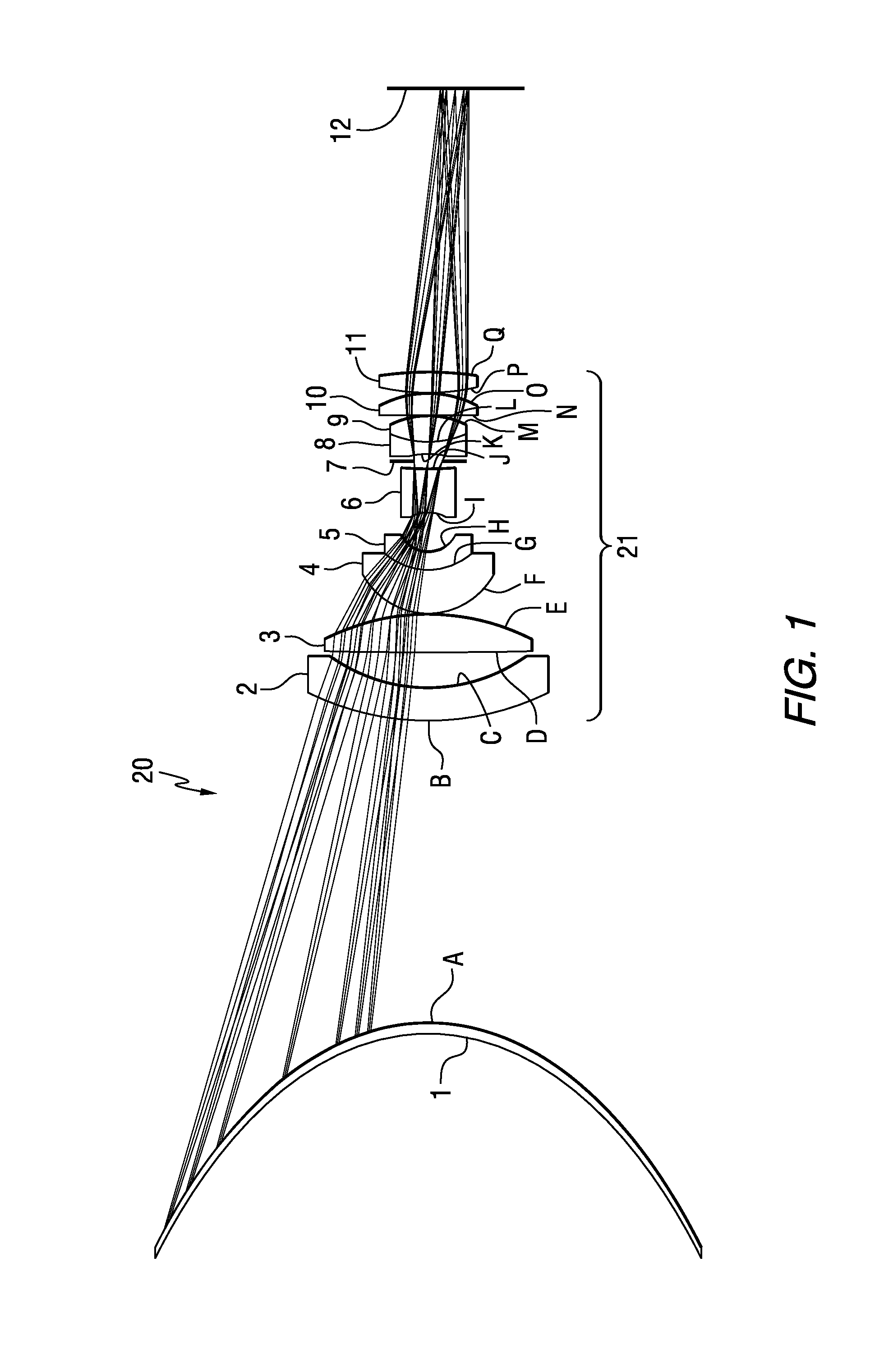Panoramic optical systems
a panoramic optical system and optical system technology, applied in optics, optical elements, instruments, etc., can solve the problems of reducing the resolution of the portion of the field near the horizontal plane, and not allowing much light to reach the image through the pinhole, so as to minimize astigmatism and minimize astigmatism
- Summary
- Abstract
- Description
- Claims
- Application Information
AI Technical Summary
Benefits of technology
Problems solved by technology
Method used
Image
Examples
Embodiment Construction
[0024]The panoramic optical system of the present invention comprises an ellipsoidal mirror and multiple dioptric lens elements. The ellipsoidal mirror is designed to minimize astigmatism and the dioptric lens elements counterbalance aberrations introduced by the mirror.
[0025]Referring to FIG. 1, a panoramic optical system 20 in accordance with an embodiment of the present invention includes a single ellipsoidal mirror 1 and a dioptric group or lens system 21. The mirror 1 is elliptical in form to minimize astigmatism, compared to spherical, parabolic or hyperbolic mirrors that introduce significantly more astigmatism.
[0026]The dioptric group 21 includes a multiplicity of dioptric elements 2-6 and 8-11 and an aperture stop 7. Light enters the dioptric group 21 after reflecting from the mirror 1. As it passes through the dioptric group 21 it passes through the aperture stop 7, which limits the F / number of the beam.
[0027]The aperture stop 7 may be made of a single part, such as a shee...
PUM
 Login to View More
Login to View More Abstract
Description
Claims
Application Information
 Login to View More
Login to View More - R&D
- Intellectual Property
- Life Sciences
- Materials
- Tech Scout
- Unparalleled Data Quality
- Higher Quality Content
- 60% Fewer Hallucinations
Browse by: Latest US Patents, China's latest patents, Technical Efficacy Thesaurus, Application Domain, Technology Topic, Popular Technical Reports.
© 2025 PatSnap. All rights reserved.Legal|Privacy policy|Modern Slavery Act Transparency Statement|Sitemap|About US| Contact US: help@patsnap.com



